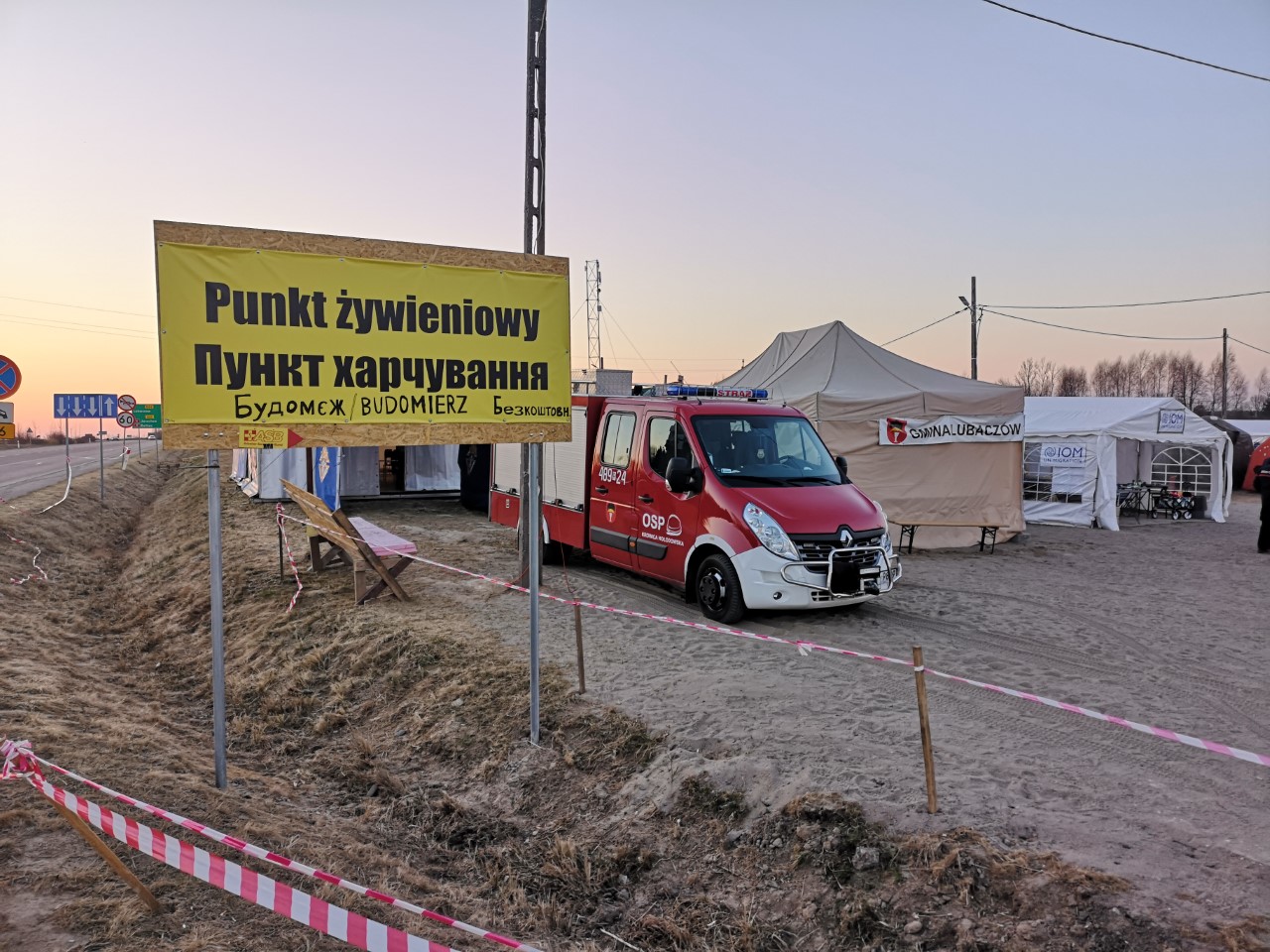
 Dr Philipp Seuferling, LSE Fellow in the Department of Media and Communications, and Dr Michelle Pfeifer, postdoctoral research associate at the Chair of Digital Cultures at TUD Dresden University of Technology, argue for historical interventions to understand and challenge projects of “smart” bordering.
Dr Philipp Seuferling, LSE Fellow in the Department of Media and Communications, and Dr Michelle Pfeifer, postdoctoral research associate at the Chair of Digital Cultures at TUD Dresden University of Technology, argue for historical interventions to understand and challenge projects of “smart” bordering.
Enthusiastic projects aimed at making state borders “smarter” through the heavy deployment of digital, automated, and artificially intelligent technologies are now omnipresent. Using extensive investment, border authorities of states across the globe are setting up programs and experiments to restructure different elements of border control with new media technologies.
Ranging from attempts to predict border-crossings, conduct spatial surveillance of border zones, all the way into the databases and information systems used by authorities for decision-making and the everyday surveillance of non-citizens, the buzzword “smart border” seeps through the lingo of migration and border authorities as well as tech companies who speak of smart borders at meetings, conferences, trade fairs, in calls for academic research projects, and in offices of governments and humanitarian NGOs. The term attempts to articulate a particular future of the bordered state: invoking the lofty promises of efficiency, optimization, neutrality and seamlessness tied to datafied technologies.
For instance, the smart borders package passed by the European Commission in 2013 is supposed to provide more streamlined travel to the EU without interruptions, literally without seams, through for instance, the expansion and integration of large database systems. At the same time, this package includes a widespread collection of personal data and the fight against what the commission calls “irregular migration” reinforces the violent and racialized discrimination of borders.
At the intersections of critical migration and border studies and media and critical data studies, important contributions have been made that map out the detrimental, violent consequences of such technologies, which often blatantly disregard rights to privacy, reinforce racialized, gendered and other discriminations, or simply malfunction leading to wrongful, black-boxed decisions and predictions made.
Cutting through the weeds
In order to advance this critical agenda, we need to cut through different weeds. First, the weeds of all-encompassing techno-solutionism propagated by states and the companies selling them the respective tech, which recast political problems, such as mobility (in)justices, as technologically solvable calculations, thus sweeping inherent injustices of borders under the carpet. And second, the weeds of a too narrow, techno-centric discussion of whether systems are actually “smart” or not, or if a particular border AI is in fact as intelligent as it promises. In fact, focusing merely on technical (mal)functionalities risks promising an eventual technological solution where borders can be “fixed”, and de-politicizing how these technologies are complicit with wider border regimes.
No doubt, critical interventions on the technical level, dissecting how particular technologies actually (mal)function, are needed more than ever. Not least as grounds to advance regulatory interventions, such as currently under the EU AI Act, which has however failed to protect those most vulnerable, including people on the move, from the harms of AI. But in order to build a stronger critical coalition in resistance to border regimes and their technologies, we argue that we need a wider lens – specifically a perspective that not only looks at contemporary technological gadgets, but one that looks at the histories of how borders become practiced and materialized with and around their media technologies, be they digital or not.
Myria Georgiou and Lilie Chouliaraki describe the “digital border” as the specific combination of symbolic discourses of exclusion and territorial technologies of control and surveillance, both of which are realised through digital technologies. Yet these discursive and material elements of the “digital border” – i.e. how we imagine and legitimize borders, as well as how we actually build and realise them through technological infrastructures – are not built on any kind of clean slate, devoid of history, or preceded by a “less mediated” history. How knowledge about people on the move is produced, and control over bodies enacted, has long trajectories of continuities and change, and is highly contingent on these histories.
The current instantiation of borders, ridden by what Orit Halpern and Robert Mitchell call a “smartness mandate,” is only one possible present and future: an imperative to subject all areas of society, from cities, to homes, and borders, to the specific logics of artificial intelligence and machine-learning, whose goal it is to reduce complex and messy realities to optimizable processes and thus manage life sustainably.
Situating smart borders within historical context
Borders have never been specifically “smart” or “dumb,” and we should refrain from ableist metaphors to grasp the interrelations of borders and technology altogether. The sole focus on supposedly “new” technological gadgets and tools, we argue, obscures their underlying functions and operations of border violence. This suggests that we can regulate our way out of borders and the violence they enact. Placing those technologies within histories allows us to grapple with the underlying operations they are intended to serve, which have long historical trajectories far beyond the digital.
At a recent conference in Dresden, we explored the question “When was the ‘Smart Border’?” in an attempt to reformulate research agendas that situate smart borders within a longer historical context. Bringing together scholars from different fields and disciplines including Media Studies, Anthropology, Geography, and Sociology, and engaging with a range of geographical and historical contexts over the course of three days, we discussed the potentials and limits of writing histories of “smart borders.”
Some common themes emerged from the discussions. First, the politics of borders are historically negotiated within the ever-different technologies used. Tracing how specific bordering technologies have emerged within situated historical contexts exposes notions of “smartness” across time and space: for instance, in the centrality of cybernetic imaginaries around computational information systems, or decision-making systems used for border policing. We discussed how these decision-making systems (re)produce categorizations of migrants versus citizens that are rooted in eugenicist and racist ideologies. For instance, photography was a central medium to produce typologies of “criminality” in the 19th century and featured prominently in the development of scientific racism. The visualization of the Other through different media – from photography to facial recognition – was also historically used to enact exclusions and continues to be central in the development of state surveillance and border control. Such histories make visible the present in the past – and vice versa: the lingering of the past in the present.
Second, histories of borders and technologies allow for an understanding of continuity and discontinuity and the relationship between non-digital and digital technologies of border control and governance. For instance, rather than accepting the techno-solutionist claims of many smart border projects, we can emphasize the contingencies, failures, and messiness of how technologies are developed and used. Rather than a smooth and one-directional progress through innovation, we can see bordering as a permanent process of repair that is marked by experimentation and trialing. Emphasizing bordering as a process of repeated failure and repair also allows us to see it alongside attendant histories and theories of policing, and security, but also histories of solidarity and struggles against borders.
Outlook: decenter and recenter media technology from the discussion
Ultimately, attention to the diverse historical threads that make up borders at different moments in time allows us to articulate other futures of a just world without borders. We need to understand better how specific media technological operations became legitimate, and in which social and cultural contexts they have been thought out and developed. Then we can productively undo and question the rhetoric of newness and techno-solutionism around current-day technologies, sold as revolutionary game-changers.
However, this critique must not be naïve in claiming that everything has already existed before, sidelining the actual harms and violence enacted with new technologies. Rather, history can reveal where violent practices of mobility control and humanitarian protection, that has also become central to of bordering practices, became both envisioned as well as resisted against at the interfaces of technological systems and socio-political contexts. By foregrounding the temporalities of borders and technologies we also want to create and sustain imaginaries outside the technocratic, reductive solutionism that smartness advocates, and instead strengthen more complex grappling with justice and solidarity. And after all, the present moment is no less historical than any point in the past, and the new imaginaries we produce today will perhaps be disregarded in the future – and thus are malleable and changeable if we want.
This post represents the views of the authors and not the position of the Media@LSE blog, nor of the London School of Economics and Political Science.





